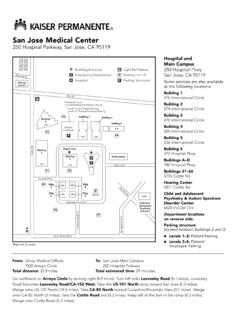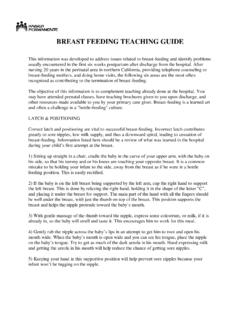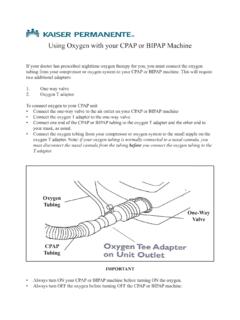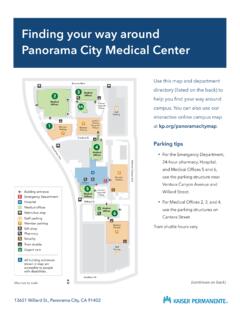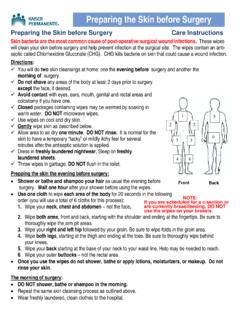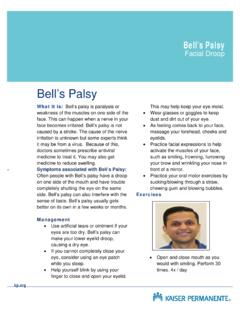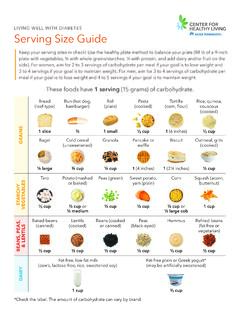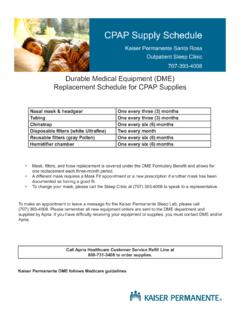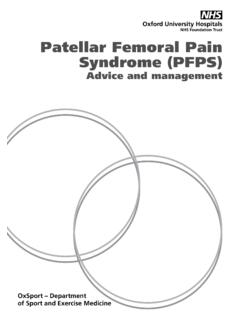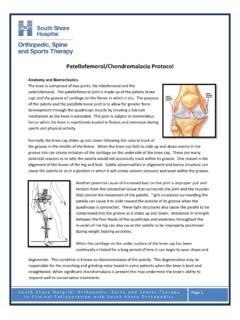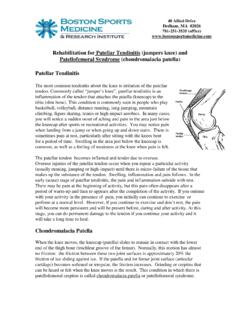Transcription of Patellofemoral Pain Syndrome (Runner's Knee): Exercises
1 Patellofemoral Pain Syndrome (Runner's Knee): ExercisesYour Kaiser Permanente Care InstructionsHere are some examples of typical rehabilitation Exercises for your condition. Start each exercise off the exercise if you start to have doctor or physical therapist will tell you when you can start these Exercises and which ones will workbest for to do the exercisesQuad with your affected leg straight and supported on the floor or a firm bed. Place a small,rolled-up towel under your affected knee. Your other leg should be bent, with that foot flat on the thigh muscles of your affected leg by pressing the back of your knee down into for about 6 seconds, then rest for up to 10 8 to 12 raises to the on your back with your good knee bent so that your foot rests flat on the floor. Your affectedleg should be straight.
2 Make sure that your low back has a normal curve. You should be able toslip your hand in between the floor and the small of your back, with your palm touching the floorand your back touching the back of your the thigh muscles in your affected leg by pressing the back of your knee flat down to thefloor. Hold your knee the thigh muscles tight and your leg straight, lift your affected leg up so that your heel isabout 12 inches off the for about 6 seconds, then lower your leg slowly. Rest for up to 10 seconds 8 to 12 slide with ball squeezePatellofemoral Pain Syndrome (Runner's Knee): Exercises (page 2) with your back against a wall and with your feet about shoulder-width apart. Your feetshould be about 12 inches away from the a ball about the size of a soccer ball between your knees.
3 Then slowly slide down the walluntil your knees are bent about 20 to 30 your thigh muscles by squeezing the ball between your knees. Hold that position forabout 10 seconds, then stop squeezing. Rest for up to 10 seconds between 8 to 12 wall facing a wall with your hands on the wall at about eye level. Put your affected leg about astep behind your other your back leg straight and your back heel on the floor, bend your front knee and gentlybring your hip and chest toward the wall until you feel a stretch in the calf of your back the stretch for at least 15 to 30 2 to 4 steps 1 through 4, but this time keep your back knee Pain Syndrome (Runner's Knee): Exercises (page 3)Quadriceps you are not steady on your feet, hold on to a chair, counter, or your affected leg, and reach behind you to grab the front of your foot or ankle with the handon the same side.
4 For example, if you are stretching your right leg, use your right your knees next to each other, pull your foot toward your buttocks until you feel a gentlestretch across the front of your hip and down the front of your thigh. Your knee should be pointeddirectly to the ground, and not out to the the stretch for at least 15 to 30 2 to 4 wall on your back in a doorway, with your good leg through the open your affected leg up the wall to straighten your knee. You should feel a gentle stretch downthe back of your leg. Do not arch your Pain Syndrome (Runner's Knee): Exercises (page 4) Do not bend either knee. Keep one heel touching the floor and the other heel touching the wall. Do not point the stretch for at least 1 minute. Then over time, try to lengthen the time you hold thestretch to as long as 6 2 to 4 you do not have a place to do this exercise in a doorway, there is another way to do on your back, and bend your affected a towel under the ball and toes of that foot, and hold the ends of the towel in your your knee, and slowly pull back on the towel.
5 You should feel a gentle stretch downthe back of your the stretch for at least 15 to 30 seconds. Or even better, hold the stretch for 1 minute if 2 to 4 care is a key part of your treatment and sure to make and go to allappointments, and call your doctor if you are having problems. It's also a good idea to know your testresults and keep a list of the medicines you can you learn more?Go to A404 in the search box to learn more about" Patellofemoral Pain Syndrome (Runner's Knee): Exercises ". 2006-2010 Healthwise, Incorporated. Care instructions adapted under license by Kaiser Permanente. This care instructionis for use with your licensed healthcare professional. If you have questions about a medical condition or this instruction,always ask your healthcare professional. Healthwise disclaims any warranty or liability for your use of this Pain Syndrome (Runner's Knee): Exercises (page 5)
